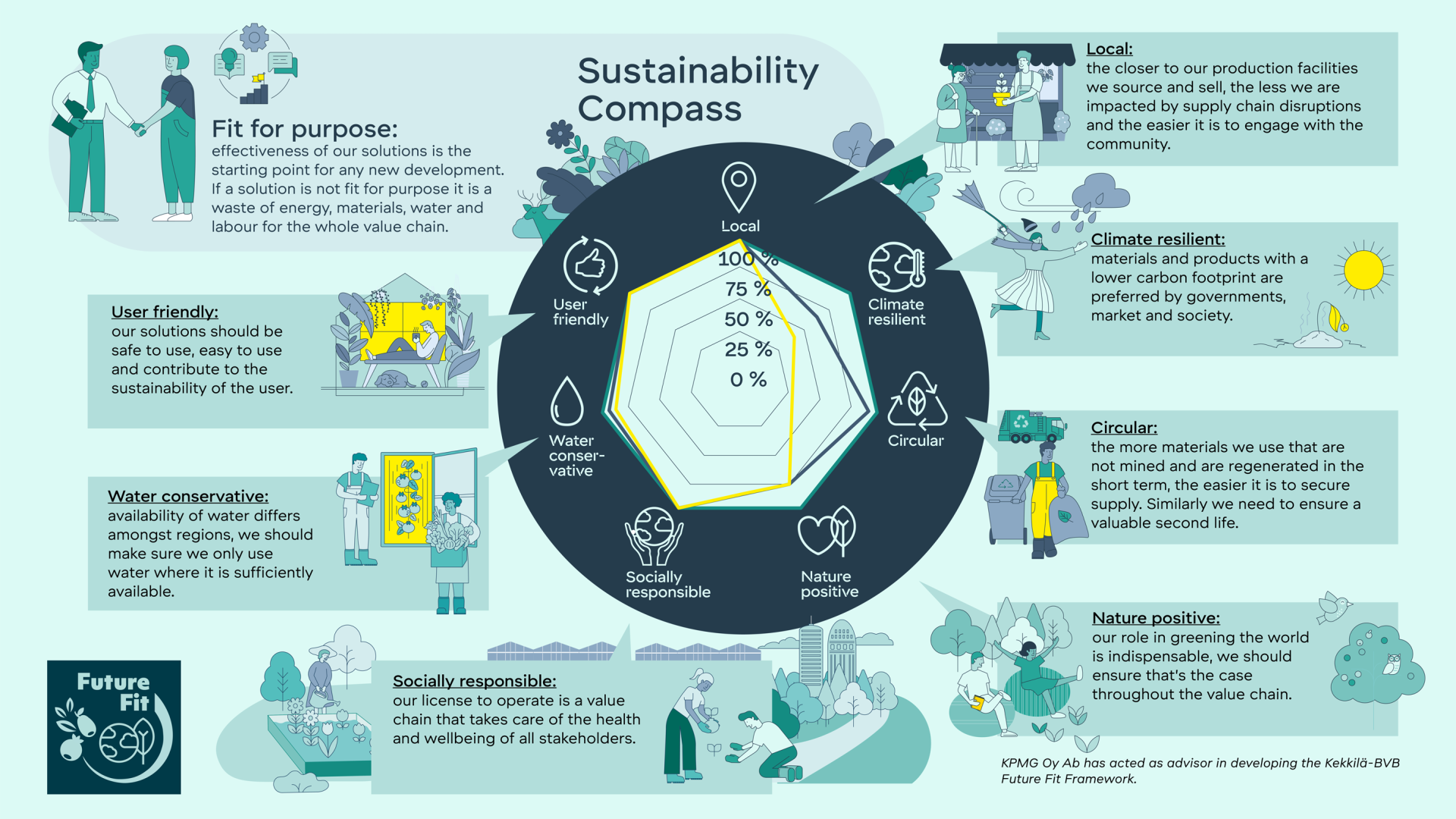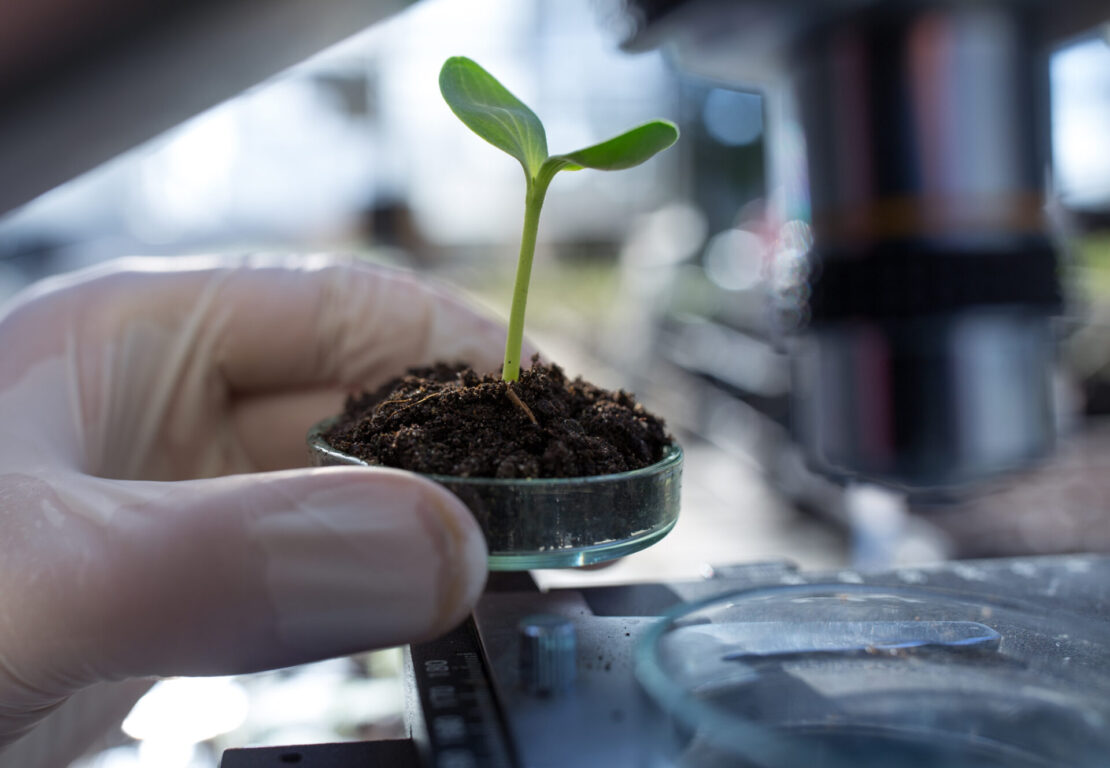
Which growing media is sustainable?
To determine the sustainability of growing media, it’s essential to consider its entire lifecycle—from the sourcing of materials to transportation and post-use management.
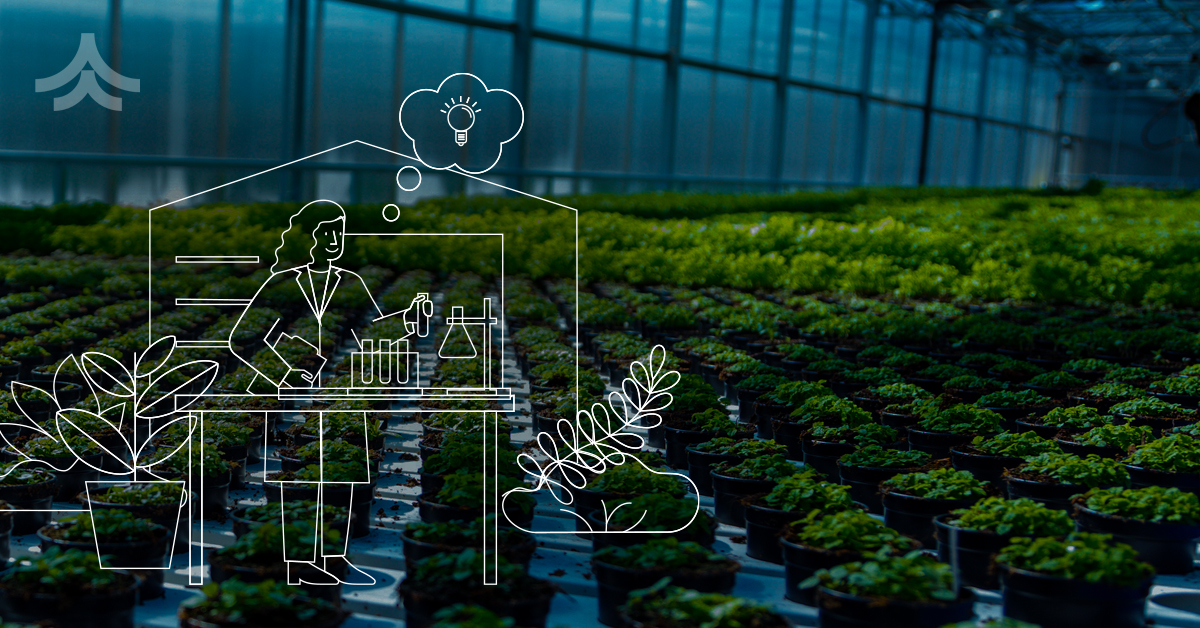
The most sustainable growing media are fit for purpose
For a growing media to be sustainable, it must match the specific crop’s needs to grow effectively. We call this “fit for purpose”. Optimizing the growing process and substrate can be time consuming. But using a growing media in which a plant grows poorly is a waste of resources, energy, and labour.
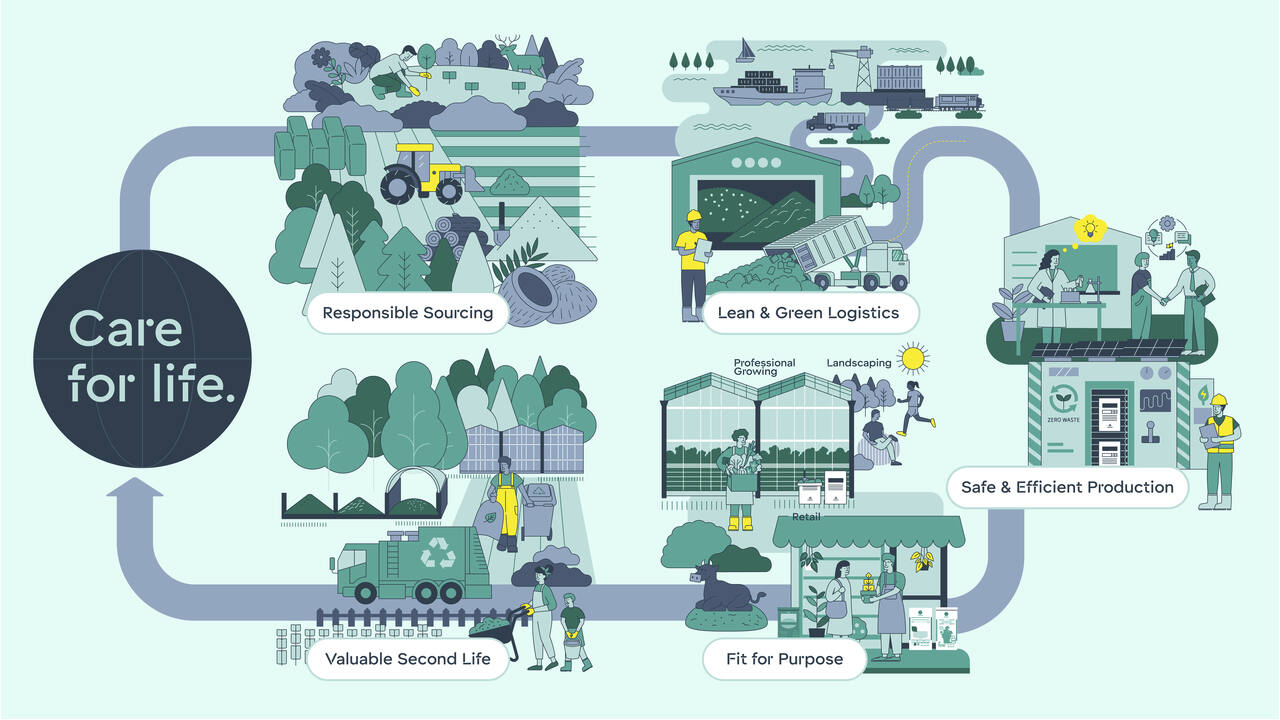
Once we have determined the needs of the growing media’s users we optimize the other aspect of the value chain:
– Responsible Sourcing: In collaboration with our suppliers, we ensure health, safety and wellbeing, while mitigating the environmental impact.
– Lean & Green Logistics: We, and our partner, make transportation as lean and green as possible, for instance by sourcing locally.
– Safe & Efficient Production: Safety comes first, for our own employees, contractors and visitors.
– Valuable Second Life: We optimize the next use of growing media, for instance as a premium compost in one of our retail mixes.
It requires a complete value chain effort to optimize these aspects.
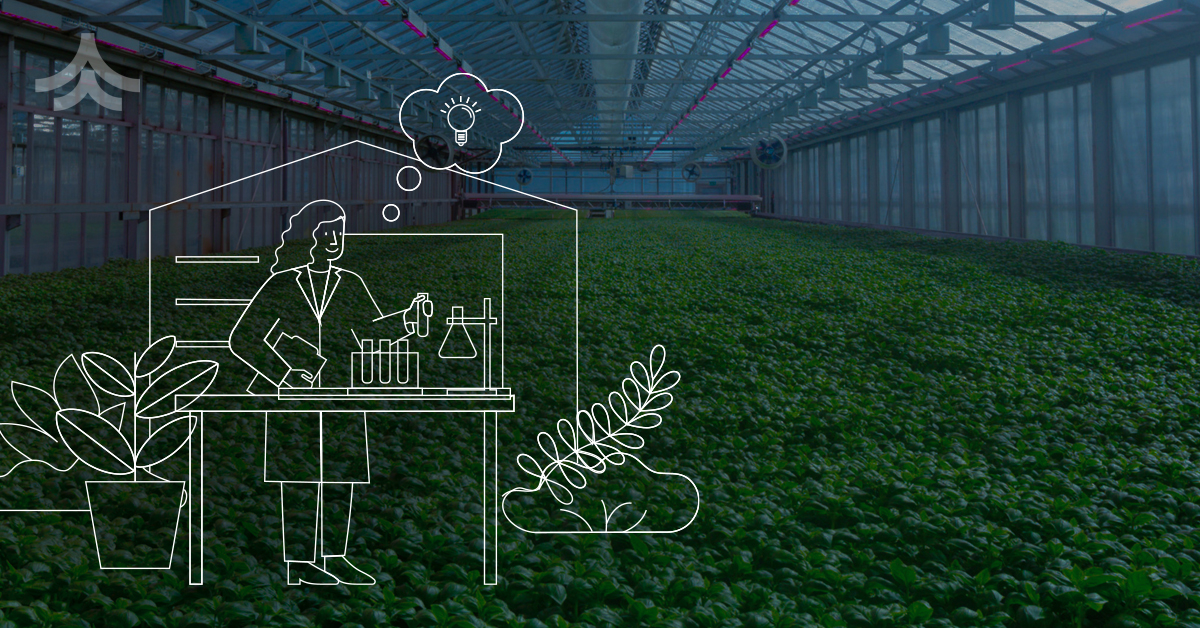
We develop growing media based on performance, sustainability, and availability
Many aspects are considered when selecting raw materials for our growing media recipes. We first look at the physical, chemical and biological performance of raw materials or a mix. It is important that the growing media solution has consistent performance and is safe to use, with low risks of impurities and diseases. For some raw materials processing steps are needed, while others are relatively safe to begin with. Especially circular raw materials and composts have a higher chance of contamination, which has to be dealt with before shipping to the grower.
Once we are aware of the performance needs of the grower we will start to optimize the sustainability of our growing media solutions. This can mean similar performance of the growing media with different raw materials (e.g. there are many recipes for universal potting soil) and sometimes it means that the choice for more sustainable raw materials results in a change of the processes at the grower (e.g. in irrigation or fertilization). As long as there is a mutual understanding of the effects of recipe changes, creating a more sustainable recipe is possible.
How do we know that one raw material is more sustainable than the other, or one recipe is more sustainable than the other recipe? In principle we are using two different tools to evaluate our products and raw materials; lifecycle assessments (‘LCAs’) and our Sustainability Compass. Both tools only evaluate the sustainability of the growing media itself. It’s important to make sure that the impact of the growing media changes are not causing the growing process to become less sustainable, because of higher need of fertilizers for instance.
And finally, availability of raw materials also plays an important role. Some raw materials are abundantly available, while others are only available in limited quantities. Especially now that many industries are looking for biobased raw materials (e.g. chemical-, construction- and energy industry) we are aware that competition for our raw materials will increase. In the table below you’ll find a summary of performance, sustainability and availability of key raw materials and our advice in using them for growing media.
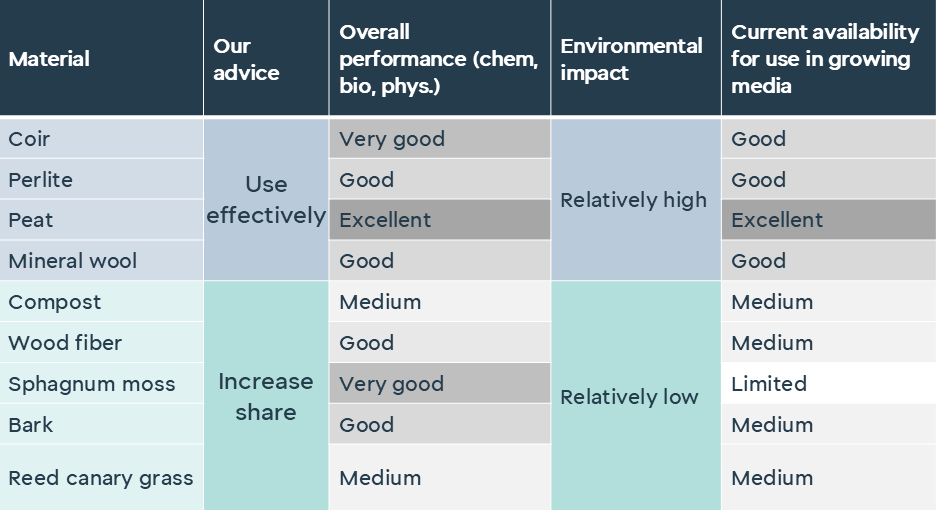
We have the knowledge and expertise to support growers in becoming more sustainable
There is an increasing demand for more sustainable solutions. In countries like Germany, the Netherlands and the United Kingdom this is clearly visible in customer requests. Our product development and R&D team are creating recipes with an increased share of raw materials with a lower environmental footprint to fulfill those market demands. By collaborating on the following steps we believe we can provide growing media that are fit for purpose, more sustainable and aligned with any market needs:
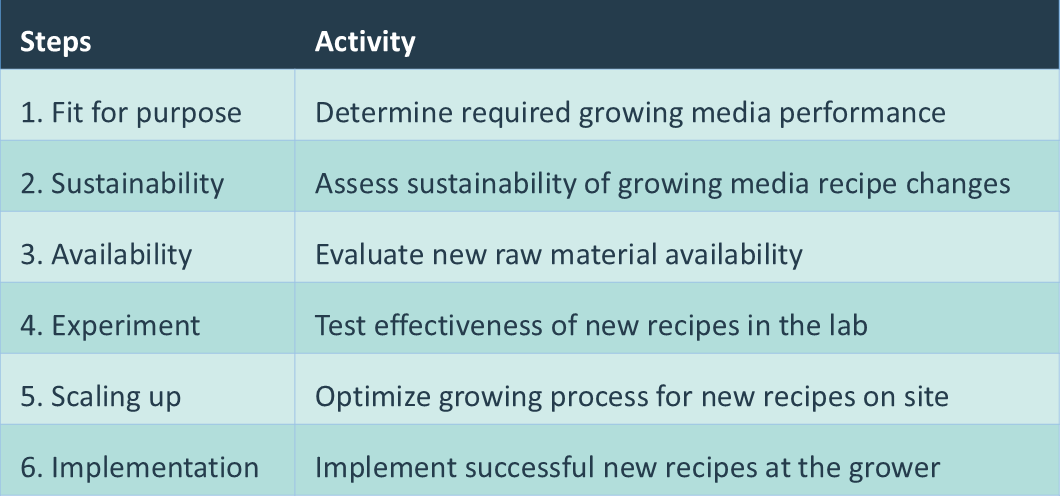
Effectiveness of our solutions is the starting point for any new development in our Sustainability Compass. If a solution is not fit for purpose it is a waste of energy, materials, water and labour for the whole value chain.
Our Sustainability Compass provides a transparent method for assessing each aspect involved in creating substrates for professional growers, hobby gardeners and bulk raw materials. Environmental, social, and business aspects are addressed throughout the value chain of our products and raw materials. The following seven aspects are assessed: locality, climate resiliency, circularity, nature positivity, socially responsibility, water conservativeness, and user friendliness. This approach allows us to set specific targets, identify areas for improvement, and recognize even small changes that can make a significant impact.
